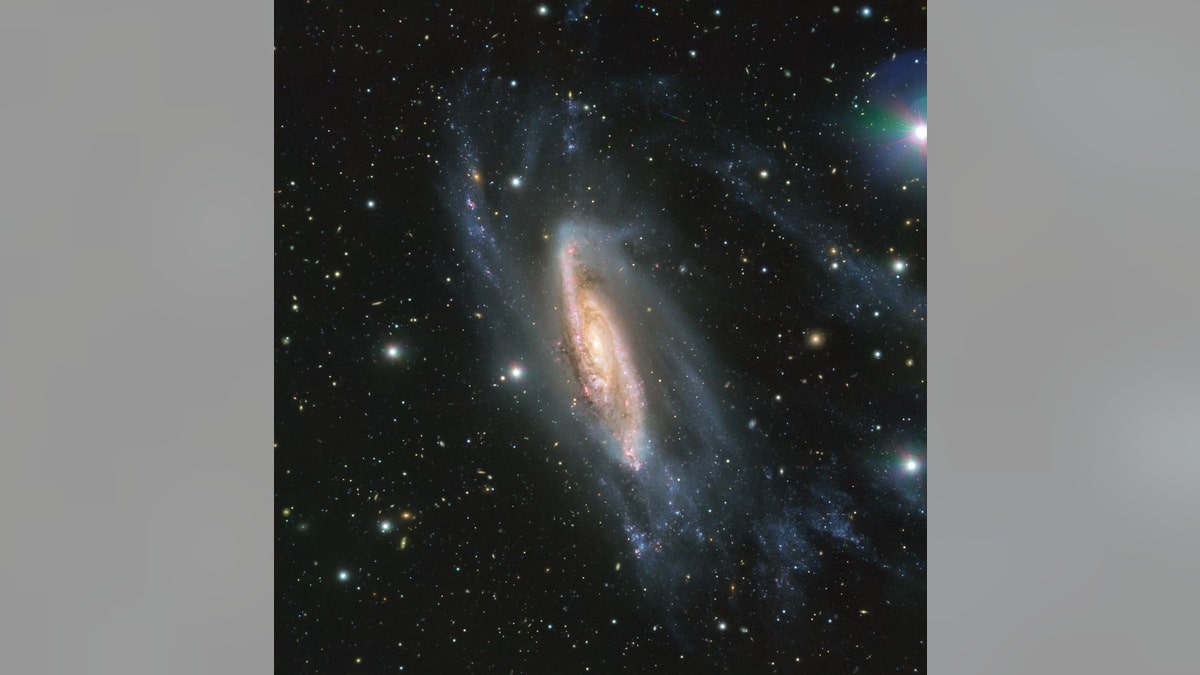
The European Southern Observatory's (ESO) Very Large Telescope in Chile captured this view of the spiral galaxy NGC 3981 in May 2018. The image was taken using the ESO's FORS2 instrument, as part of the Cosmic Gems program, which photographs the southern skies when conditions aren't good for scientific observations. An asteroid's trail can also be seen near the top, slightly right of center. Credit: ESO
The European Southern Observatory's (ESO) Very Large Telescope (VLT) in Chile has a busy observation schedule, but sometimes cloudy or moonlit skies mean a temporary halt to scientific measurements. During those times, the observatory team chooses interesting and beautiful objects across the southern skies to image in color.
In May 2018, the telescope turned its sights to the spiral galaxy NGC 3981, which lies 65 million light-years from Earth, in the constellation Crater.
The image shows off the galaxy's spiral arms of material and dense disk of hot, young stars, according to a statement from ESO. Because of the galaxy's angle, you can also see its bright center, which is highly energetic and hosts a supermassive black hole. The arms may have been stretched outward by a run-in with another galaxy at some point, ESO officials said. [Amazing Space Views of ESO's Very Large Telescope (Photos)]
The image also features stars from the Milky Way in the foreground, as well as one surprise guest: an asteroid, whose path across the sky is visible faintly near the top of the image (slightly right of center). The asteroid's path comes across in multiple colors because of how the color images are knit together. An instrument on the VLT called FORS2 gathered light over the course of three different exposures and combined them to create the final image, tracing the path the asteroid traveled during each exposure. The length of each of the exposures can also be seen in the lengths of the colored streaks, and ESO representative told Space.com: blue for about 1,225 seconds, then green for about 360 seconds, than red for 300 seconds. After that, an exposure for hydrogen alpha light, which is a deep red wavelength, was taken for about 1,080 seconds.
When focusing on science, the VLT has turned its mammoth eye toward worlds circling distant stars, watching exoplanets form and measuring their atmospheres, as well as surveying gas and dust across the universe and tracking galactic evolution.
Original article on Space.com.




















